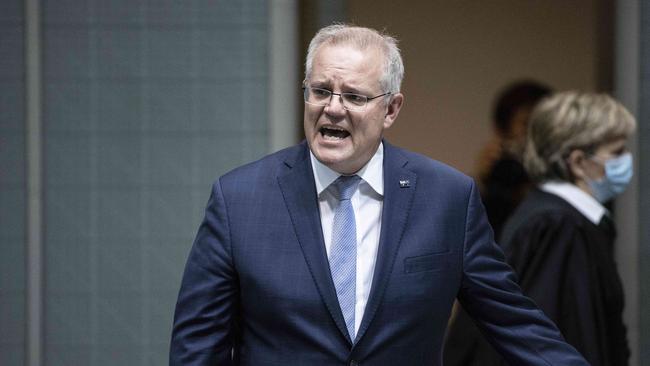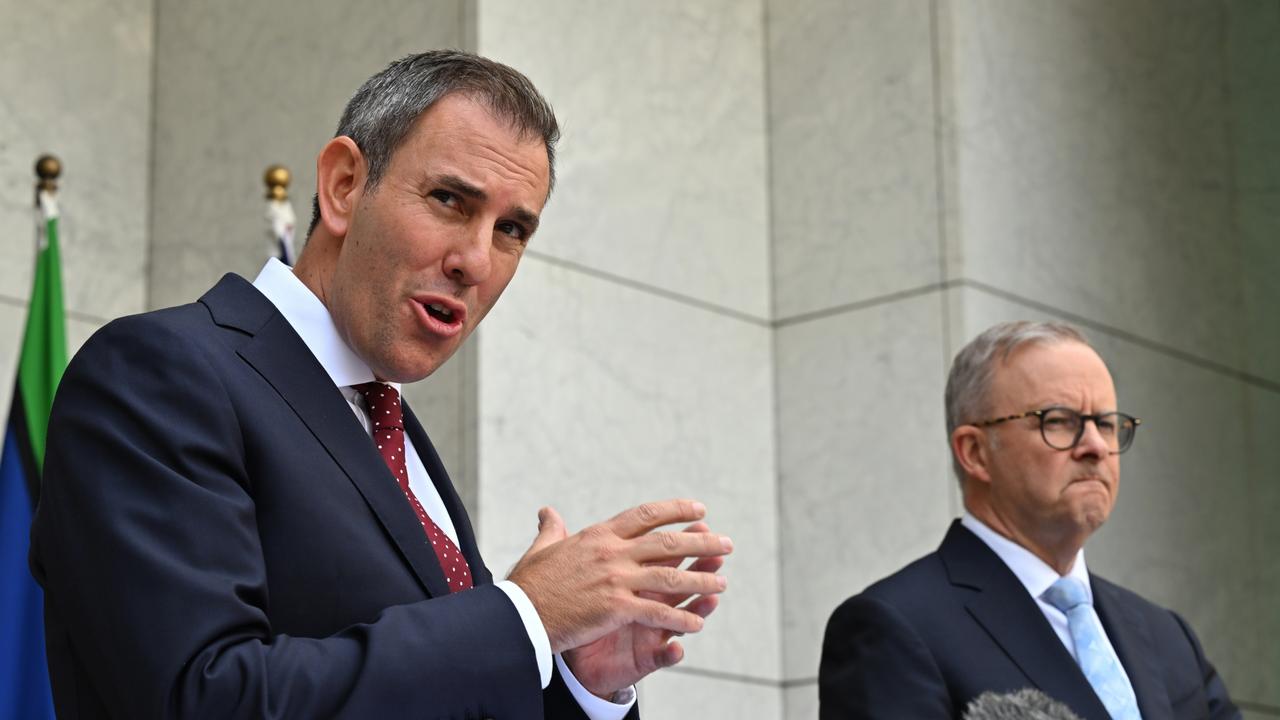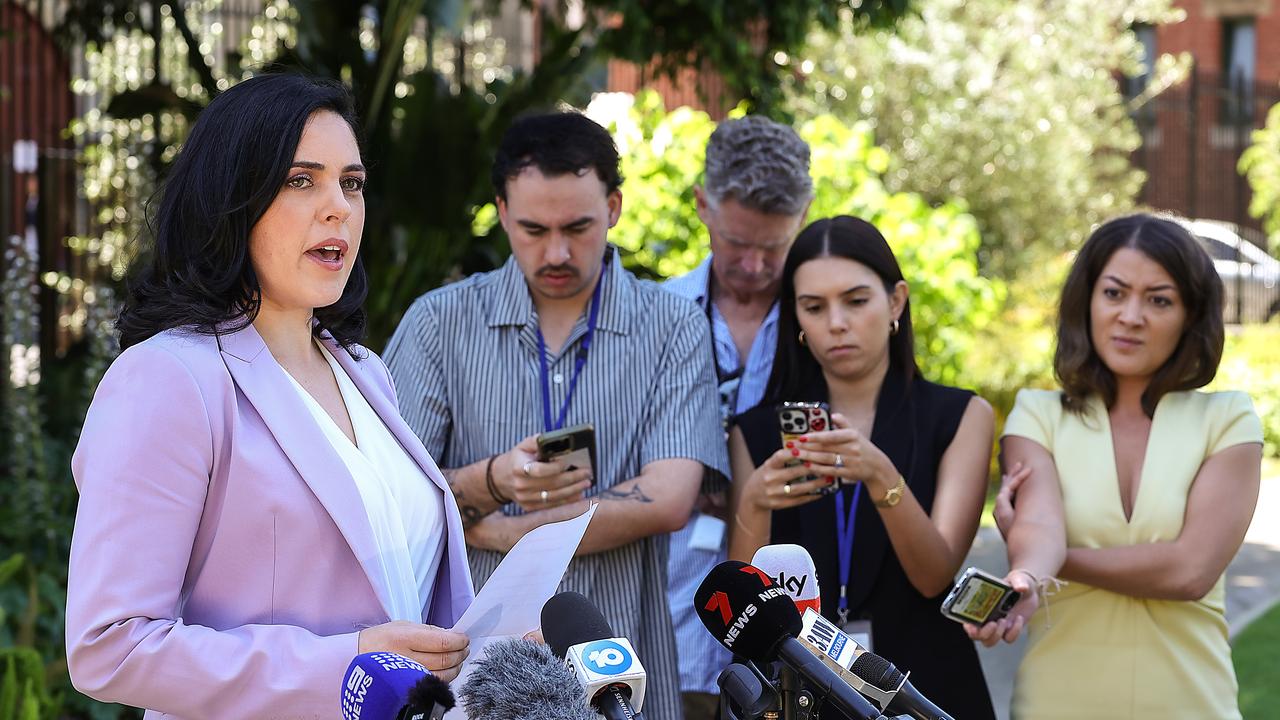Coronavirus: Closed-border states reject Scott Morrison’s plan
Queensland and WA have rejected Scott Morrison’s plan to reopen borders, vowing to keep their restrictions in place despite the most populous states.

Queensland and Western Australia have rejected Scott Morrison’s plan to reopen borders, vowing to keep their restrictions in place despite the most populous states, NSW and Victoria, being ready to adopt new rules on interstate travel.
Amid fresh divisions over Queensland’s ban on NSW, the impasse has weakened the national cabinet’s ability to drive the pandemic recovery and frustrated Coalition MPs, who say people are being treated unfairly, particularly in border communities.
The Liberal states of NSW and South Australia have been responsive to the Prime Minister’s appeals to fix border problems affecting healthcare, education and work, but the federal government does not believe Queensland will remove its border closure with NSW until after the state election on October 31.
While conceding defeat on his push to set a national standard on travel restrictions by defining a coronavirus hotspot, Mr Morrison said he would “continue to exercise patience”.
“I will continue to recognise the states are all coming from different situations,” he told The Australian on Thursday. “They may not all come together at first or at once, but it is important we provide the way forward so they can all join up. Sometimes you have to rebuild things one brick at a time.
“My immediate priority is to ensure that Australians receive medical care where and when they need it. That is a critical priority and we need to work harder to prevent these horrific and cruel outcomes, whether borders are up or borders are down.”
Queensland Chief Health Officer Jeanette Young indicated the Palaszczuk government was standing by its tough requirement of no coronavirus community transmission in NSW for 28 days before the border reopened, which NSW Premier Gladys Berejiklian said was a “tall order’’ and would be all but impossible to meet.
Ms Berejiklian urged her state counterparts to have confidence in their health systems during the pandemic and “take their borders down”. “The guideline that’s been set by the Queensland government in relation to when they reopen their border is a pretty tall order,’’ the Premier said.
“I don’t know anywhere on the planet where society can function openly and productively during a pandemic and give an assurance that you’re going to have zero cases of community transmission for a prolonged period. We’ve demonstrated for two months nearly that you can actually maintain a good control of the virus and keep your economy going. I hope other states have the confidence to take their borders down and do the same.”
But West Australian Premier Mark McGowan declared: “We’re not going to agree to bring down the borders, I’ve made that plain to the Prime Minister.”
Victorian Premier Daniel Andrews said it was not beyond premiers to agree to a national standard on border restrictions, where states could target particular suburbs or cities no matter where they were. “I’m not here to criticise other premiers,’’ he said. “If I were in their situation, I probably would have made exactly the same judgments they made (in shutting off Victoria). But at some point, when we have successfully seen off this second wave and locked in that long-term COVID normal … that will be the time for them to maybe revise some of the decisions they’ve made.”
Acting Chief Medical Officer Paul Kelly’s hotspot definition will be put to the national cabinet on Friday as a blueprint to lift border closures. The Prime Minister would consider it a win if NSW and Victoria, Australia’s two biggest state economies, sign on.
Denmark’s “traffic light” system, which uses three colours to indicate whether citizens from particular regions can travel unrestricted, has informed Professor Kelly’s model.
“There’s no need to look for conflict on this,” Mr Morrison said. “We just need to get this sorted and give Australians clearer direction and hope about the road ahead. I’ve put a peg in the ground with the hotspots plan and I think its scientific and practical merits will eventually be accepted in its current or modified form, when the politics fade and we can get Australia back on track.”
Josh Frydenberg, Nationals leader Michael McCormack and Agriculture Minister David Littleproud all blasted the Palaszczuk government for allowing AFL officials to quarantine at a Gold Coast resort while other Australians were unable to access healthcare in the state or recover at home.
“How is it fair that a grandmother of seven, who is recovering from brain surgery, has been forced to quarantine in a hotel room in Queensland as opposed to being able to isolate at home as part of the recovery?” the Treasurer said. “At the same time, you’ve got footy officials sitting by the pool bar — it does look like double standards.”
Professor Kelly has also reviewed and tweaked Mr Littleproud’s national agricultural workers’ code, after some state chief health officers rejected his proposal for free movement across the country.
Queensland Agriculture Minister Mark Furner said his government would “push back against any federal government attempt to blow holes in the border restrictions that have been protecting Queenslanders”, in a further sign national cabinet would likely split on Friday.
Mr Littleproud said premiers that rejected his code “must have some medical or clinical advice to not support it and I would encourage them to bring that forward”.
The National Farmers’ Federation said after more than six months living with COVID-19 in Australia, it was time to shift from “panicked crisis management to a workable business-as-usual approach”.
Australian Industry Group chief executive Innes Willox said the best use for a COVID-19 hot spot definition would be to shift the strategy to targeted responses to cases, rather than blanket lockdowns and border closures.
Australian Chamber of Commerce and Industry chief executive James Pearson called on national cabinet to commit and stick to a new road map and define hot spots.
“The compelling incentive to move from blanket border closures to targeted, proportionate and nimble measures is the need to save jobs and create new ones in the private sector, where the vast majority of Australians are employed,” Mr Pearson said.
“Businesses need to be able to get back on to their feet and the national economy needs to be able to work properly again. That means moving people, services and goods safely across the country.”



To join the conversation, please log in. Don't have an account? Register
Join the conversation, you are commenting as Logout